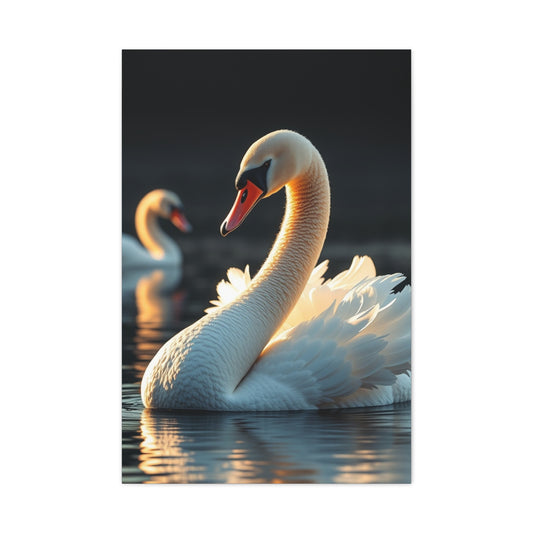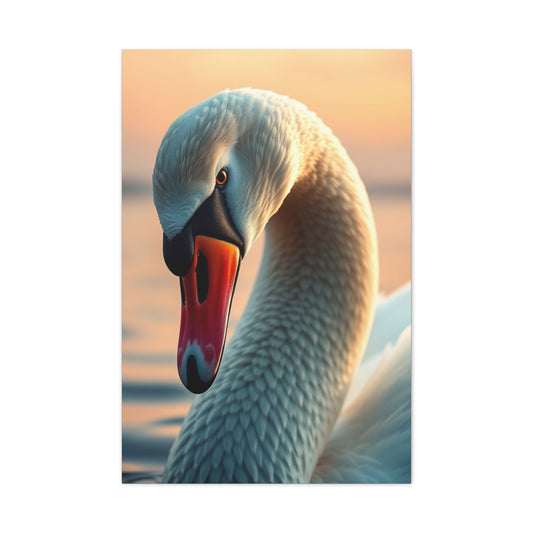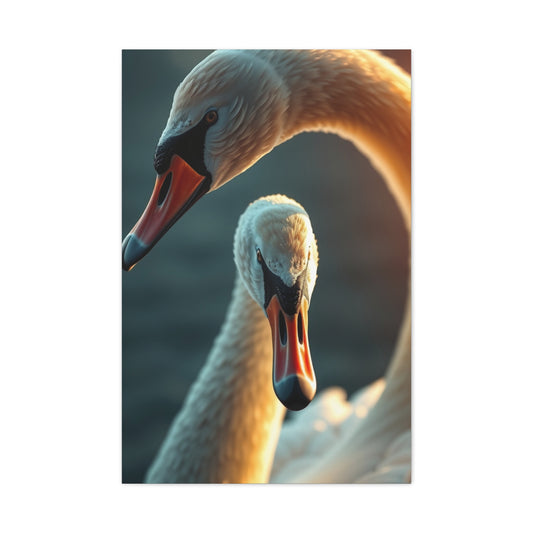When venturing into the realm of photography, one term surfaces more frequently than most—resolution. Whether you're a hobbyist, a budding professional, or someone shopping for their first camera, understanding the intricate interplay of megapixels, sensor technology, and lens optics is crucial to making a well-informed purchase. Though high-resolution cameras like the Sony A7R V with its eye-catching 61 MP sensor often dominate marketing narratives, the real story lies beneath the numbers.
Let’s unpack the complex concepts surrounding resolution in photography and explore why megapixels are significant—but not the sole indicator of quality.
What Is Resolution in Photography?
In the context of digital photography, resolution refers to the amount of detail a camera sensor can capture. It’s most commonly measured in megapixels, which represent millions of individual pixels on the image sensor. These pixels absorb light and color information, and their collective function is what forms a photograph.
A higher resolution generally enables you to produce sharper, more intricate images. But there's nuance here: resolution is a piece of a larger puzzle. A photograph with massive resolution but poor color accuracy or dynamic range may still fall short of professional standards.
Understanding the Megapixel Metric
To make sense of megapixels, consider that a camera with a 24.1 MP resolution means its sensor contains approximately 24.1 million pixels. These pixels are arranged in a grid—typically, for a 24.1 MP sensor, the dimensions might be 6000 x 4000 pixels. Multiply the two, and you get the full resolution.
It’s a common misconception that more megapixels always lead to better photos. While more pixels increase the potential for finer detail, factors like pixel size, sensor technology, and lens sharpness play an equally vital role. A balanced ecosystem within the camera is key to producing exceptional images.
Do More Megapixels Always Equal Better Image Quality?
The idea that more megapixels automatically translate to superior image quality is widespread, but it oversimplifies the complex mechanics of digital imaging. While megapixel count is a significant specification, it’s just one of many elements that collectively determine the final image output. Understanding how resolution interacts with sensor design, optics, light sensitivity, and post-processing potential is essential for discerning photographers and content creators alike.
The Benefits of Higher Megapixel Counts
At a fundamental level, having more megapixels means your camera sensor is equipped with a greater number of light-sensitive sites, allowing it to capture more intricate visual information. This facilitates the production of high-resolution images with tremendous detail, making them suitable for large-scale printing or aggressive cropping in post-production without noticeable degradation.
For example, a 24-megapixel camera can deliver images sized at around 6000 x 4000 pixels, which is more than enough for sharp 8x10-inch prints at 300 DPI. When you move to cameras offering 45 MP, 61 MP, or more, the possibilities extend to billboard-sized outputs or intensive post-processing workflows such as focus stacking, panorama stitching, and high-end commercial retouching.
Photographers working in genres like product photography, fine art, architecture, or large-format landscape printing often rely on high-resolution sensors for precision. The extra pixels give room to recover highlights, clean up shadows, and make minute adjustments to composition long after the shutter has clicked.
Why More Megapixels Don’t Always Guarantee Better Photos
However, the story of image quality is more nuanced. A common misconception is that sensor resolution alone governs image sharpness and clarity. This notion neglects the roles of optical quality, sensor performance, processing pipeline, and environmental conditions.
One significant factor is pixel size. When camera manufacturers cram more pixels onto a sensor of the same physical dimensions, each individual pixel becomes smaller. Smaller pixels gather less light per unit area, which may reduce the overall signal-to-noise ratio. This can become especially problematic in low-light environments, where noise becomes more visible and dynamic range may suffer.
For instance, a 50 MP APS-C sensor may underperform compared to a 24 MP full-frame sensor in night or indoor scenarios, simply because the larger pixels on the full-frame sensor collect more light, preserving color accuracy and subtle tonal transitions.
Moreover, camera resolution must work harmoniously with lens resolution. A low-quality lens may not be capable of resolving enough detail to justify a high-MP sensor. Lenses that lack edge-to-edge sharpness, or suffer from issues like chromatic aberration and diffraction, will effectively negate the benefits of additional pixels. The result could be an image that appears soft, despite the sensor's technical superiority.
Sensor Technology and Image Processing
Another underappreciated factor is the image sensor’s back-end technology. Modern sensors use sophisticated architecture—such as back-illuminated designs, stacked layers, and advanced microlens arrays—that influence how light is captured and converted into digital data. A 30 MP sensor with enhanced sensitivity and optimized readout circuits may outperform a 45 MP sensor that uses an older or less efficient design.
This also ties into the camera's internal processing engine. Even with a high-resolution sensor, if the processor lacks the capability to manage that data efficiently, you might experience slower performance, lower burst shooting speeds, or degraded image clarity from over-compression in formats like JPEG. RAW files from high-MP sensors are large and demand powerful processors and storage systems to manage them effectively.
Practical Implications in Photography Genres
Different types of photography benefit from high resolution in varying degrees. In fashion, product, and studio environments where controlled lighting and tripods are common, high-MP sensors shine. Here, the photographer can extract every ounce of detail, recompose freely in post, and deliver ultra-high-resolution images for print and commercial use.
On the other hand, genres like wildlife, sports, or photojournalism place a premium on speed, low-light adaptability, and storage efficiency. A 20-24 MP full-frame sensor may offer superior autofocus speed, better high ISO performance, and faster buffer clearing, all of which are essential for capturing fleeting moments. In these contexts, the megapixel race becomes less relevant.
Additionally, file management becomes a consideration. Each image from a 60 MP camera can exceed 100 MB in RAW format. For professionals shooting thousands of images weekly, this presents a substantial strain on storage, backup, and processing infrastructure.
Noise and Dynamic Range: The Pixel Size Equation
As mentioned earlier, one of the drawbacks of ultra-high-resolution sensors is noise performance. With smaller pixels, each site collects fewer photons, which limits the sensor’s ability to differentiate between subtle tones, especially in shadow regions. This not only introduces more graininess but also compresses the dynamic range—reducing the latitude to recover blown highlights or blocked shadows during editing.
Larger pixels, by contrast, can accumulate more light with less electrical interference, which improves both color fidelity and contrast gradation. Cameras with larger pixels often exhibit smoother tonal transitions and less chromatic blotching at high ISO values. This makes them favorable for photographers who work in ambient light settings without strobes or supplemental lighting.
The Role of Aperture and Light Diffraction
High-resolution sensors are also more susceptible to diffraction, an optical phenomenon where light bends as it passes through small apertures. Diffraction causes a softening effect that is particularly noticeable when using narrow apertures like f/16 or f/22. On a 20 MP sensor, diffraction may start to degrade sharpness around f/16, but on a 60 MP sensor, the effects can become evident as early as f/8 or f/11.
Therefore, photographers using high-resolution sensors must be more deliberate with their aperture choices. To maintain maximum detail, the use of mid-range apertures such as f/5.6 to f/8 is generally recommended—unless depth of field requirements necessitate stopping down further.
Cropping, Framing, and Post-Processing Versatility
One of the strongest arguments in favor of high megapixel counts is the flexibility it provides in post-production. You can crop significantly into an image to reframe a subject or remove distracting elements without compromising overall sharpness. This is especially beneficial for wildlife photographers or those shooting unpredictable subjects, where precise framing is often not feasible at the moment of capture.
It also enables the creation of multiple compositions from a single file—tight portraits, landscape panoramas, and abstract close-ups can all be extracted from one shot, reducing the need for redundant exposures.
Balanced Resolution for Real-World Use
Ultimately, the right resolution depends on your intended output. For web use, social media, and basic printing needs, anything above 16 MP may be more than sufficient. A 24 MP sensor strikes a practical balance between resolution, low-light performance, and manageable file sizes. Photographers who specialize in delivering images for 4K or 8K screens may benefit from sensors in the 30-50 MP range, depending on their workflow.
For archival, large-format, or commercial applications, higher resolutions can indeed be beneficial. But those benefits come with trade-offs—storage demand, slower shooting speeds, increased sensitivity to lens imperfections, and more noticeable diffraction.
Sensor Size: The Backbone of Image Quality
In digital photography, few components play as vital a role as the image sensor. Often described as the "digital film" of modern cameras, the sensor is the heart of image capture. Its physical size not only dictates how much light it can absorb but also influences resolution, dynamic range, color depth, and overall image character. While resolution and megapixels often dominate marketing headlines, sensor size remains the true cornerstone of high-quality photography.
Understanding how sensor dimensions impact your photos is crucial, especially if you’re comparing different camera systems or considering an upgrade. Whether you're capturing delicate studio portraits, sweeping landscapes, or fast-paced sports events, the right sensor size can significantly elevate the fidelity and versatility of your work.
What Is a Camera Sensor?
At its core, a sensor is a grid of tiny photosensitive units called pixels. When you take a photo, these pixels convert incoming light into electrical signals, which are then processed into a digital image. The larger the sensor, the more light it can gather, leading to cleaner images with enhanced clarity, superior tonal transitions, and deeper color representation.
The interaction between light and sensor is a delicate dance. Inadequate sensor space limits pixel size and spacing, constraining the sensor’s ability to record nuanced information—especially in high-contrast or low-light scenes. Hence, two cameras with identical megapixel counts can deliver vastly different results if their sensor sizes differ.
Primary Sensor Types in Digital Cameras
Digital camera sensors are categorized based on their physical dimensions, and each type has its advantages and trade-offs. Here's a breakdown of the most commonly used sensor formats in photography today:
-
APS-C Sensor (Crop Sensor) – Approx. 23.5 x 15.6 mm
This format is widely used in mid-range DSLR and mirrorless cameras. While smaller than full-frame, APS-C sensors offer a strong balance between portability, affordability, and performance. They introduce a crop factor—typically around 1.5x—which affects field of view and effective focal length. Despite their reduced size, modern APS-C sensors have evolved to offer excellent detail and sharpness, especially in well-lit environments. -
Full-Frame Sensor – 36 x 24 mm
Full-frame sensors mirror the size of traditional 35mm film and represent the industry standard for professional and enthusiast-level photography. These sensors gather more light, enabling superior performance in low-light conditions. They also provide shallower depth of field for background separation and richer tonal transitions. With larger pixels and wider surface area, full-frame sensors offer unmatched flexibility across diverse genres—from wedding and portrait photography to documentary and fashion. -
Medium Format Sensor – Typically 43.8 x 32.9 mm or larger
Positioned at the top tier of digital imaging, medium format sensors are larger than full-frame and offer even more resolution, dynamic range, and color fidelity. These sensors are predominantly found in high-end commercial or studio systems and are ideal for landscape, fine art, and high-resolution product work. Though more expensive and bulkier, their ability to render micro-detail and subtle gradients is virtually unparalleled.
The Relationship Between Sensor Size and Pixel Performance
Sensor size doesn’t just determine how many pixels can be crammed onto the chip—it also impacts how each pixel behaves. Larger sensors allow for larger pixels, and larger pixels gather more photons. This translates to higher signal-to-noise ratios, reduced noise in low-light settings, and better color accuracy. A full-frame camera with 24 megapixels will generally outperform an APS-C model with the same resolution when shooting at high ISO levels or under poor lighting.
Larger pixels also help with dynamic range, allowing the sensor to preserve detail in both the brightest highlights and the darkest shadows. This is vital when photographing scenes with extreme contrast, such as sunrises, stage performances, or interior spaces lit by window light.
Depth of Field and Sensor Dimensions
Sensor size also influences how background blur—commonly referred to as bokeh—is rendered in an image. Larger sensors inherently produce a shallower depth of field at equivalent apertures and framing. This gives photographers more creative control over subject isolation and aesthetic composition.
For example, achieving a cinematic background blur with an APS-C sensor might require a wide-aperture lens such as f/1.4, while a full-frame camera could achieve similar results at f/2. This matters greatly in portrait photography, where the ability to separate a subject from the background adds emotional depth and professional polish to an image.
Field of View and Crop Factor
One often overlooked consequence of sensor size is the crop factor, which affects the field of view of attached lenses. APS-C cameras introduce a multiplication factor (usually 1.5x), effectively narrowing the angle of view. A 50mm lens behaves like a 75mm on an APS-C body, altering framing and composition.
This can be advantageous in wildlife or sports photography, where longer reach is desired. However, it’s less beneficial for wide-angle work, such as architecture or real estate photography, where full-frame sensors allow for broader perspectives without distortion or extreme lens designs.
Sensor Size and Image Quality in Real-World Scenarios
When evaluating image quality in practical terms, sensor size plays a pivotal role across genres:
-
In astrophotography, medium format and full-frame sensors shine due to their high light sensitivity and reduced noise at long exposures.
-
In documentary work, full-frame sensors offer flexibility to shoot in varied lighting, producing cleaner results in unpredictable conditions.
-
For travel photography, APS-C sensors provide a lightweight, compact alternative without severely compromising detail or image richness.
In studio-controlled environments where lighting is managed, the gap between sensor sizes narrows somewhat. Here, even crop sensors can yield professional-grade results when paired with high-end lenses and thoughtful lighting setups. For example, cameras like the Fujifilm X-T5 demonstrate how a well-optimized APS-C sensor can produce images rivaling some full-frame models in terms of sharpness and color depth.
Sensor Size and Lenses: A Symbiotic Relationship
The performance of a camera system is also influenced by how its sensor and lens work together. Larger sensors demand lenses that can resolve greater detail across a wider image circle. Consequently, lenses designed for full-frame and medium format cameras tend to be more optically sophisticated and expensive.
Conversely, lenses built for APS-C sensors are generally more compact and cost-effective but may not achieve the same level of edge-to-edge sharpness when adapted to larger formats. Therefore, understanding your sensor size helps inform smarter lens investments and system planning.
Trade-Offs and Considerations
While larger sensors offer undeniable advantages, they also come with trade-offs. Cameras with full-frame or medium format sensors are usually heavier, more expensive, and require bigger lenses. Battery life may also be shorter due to increased power demands.
For photographers shooting high volumes, sensor size affects storage and workflow efficiency. Large image files from full-frame and medium format cameras consume more memory and processing power, requiring robust computing setups for editing and archiving.
Moreover, for content creators primarily delivering work online or on social media, the perceptible difference between APS-C and full-frame images may be negligible, especially after compression. Therefore, your final delivery medium should also guide your decision on sensor size.
Pixel Pitch and Pixel Density: Small Numbers, Big Impact
In the intricate architecture of digital imaging, the interplay between pixel pitch and pixel density carries significant weight in determining overall image fidelity. While many photographers focus on megapixel counts and sensor sizes, these microscopic measurements can profoundly influence sharpness, low-light performance, dynamic range, and color precision. The concepts may appear overly technical at first glance, but grasping their real-world implications is crucial for anyone looking to make informed decisions when investing in photographic equipment.
What Is Pixel Pitch?
Pixel pitch refers to the physical distance between the centers of two adjacent pixels on an image sensor, typically measured in micrometers (μm). It reflects how tightly the individual light-sensitive sites are arranged on the surface of the sensor. A larger pixel pitch means the pixels are spaced farther apart, resulting in fewer pixels for a given sensor size. Conversely, a smaller pixel pitch indicates that pixels are densely packed, allowing for higher resolutions within the same physical dimensions.
This metric is foundational in understanding the behavior of a sensor, particularly in varied lighting environments. When shooting in bright daylight, the differences may not be obvious, but under more challenging conditions—like dim interiors or nighttime scenes—the impact of pixel pitch becomes more apparent.
What Is Pixel Density?
Closely related, pixel density is the measure of how many pixels occupy a given square millimeter of the sensor. It is usually expressed in pixels per square millimeter (px/mm²) and is influenced directly by both the resolution and the size of the sensor. A higher pixel density can deliver sharper, more detailed images by capturing more visual information per unit area. However, cramming more pixels into the same sensor size means reducing the physical size of each pixel, which introduces certain trade-offs.
While pixel density can enhance resolution and fine detail rendering, it does so at the expense of light-gathering capacity per pixel. This balance must be carefully managed to avoid compromising image quality, especially in scenarios involving fast-moving subjects, complex lighting, or extreme tonal contrast.
How Pixel Pitch Influences Light Sensitivity and Image Quality
The light sensitivity of a pixel is directly tied to its surface area. Larger pixels possess a greater ability to collect light, thereby enhancing signal-to-noise ratio and producing images with smoother gradations and more accurate color transitions. These large pixels are particularly beneficial in low-light situations, where every photon matters.
Smaller pixels, by contrast, capture less light individually, which can lead to increased noise levels, reduced tonal range, and diminished detail in shadows. When high ISO values are used to compensate for insufficient lighting, the limitations of small pixels become even more noticeable. Image artifacts, such as grain, color blotching, and banding, can emerge and degrade overall image clarity.
Cameras like full-frame DSLRs or mirrorless models with moderate resolution often feature generous pixel pitches, offering excellent performance in available light. These systems are favored by professionals working in unpredictable conditions or with limited access to artificial lighting.
The Trade-Off Between Resolution and Pixel Size
A fundamental compromise in sensor design lies between achieving higher resolution and maintaining adequate pixel size. Increasing the megapixel count on a sensor without increasing its physical size results in smaller, more densely packed pixels. This approach is advantageous for applications requiring extreme detail, such as product photography, large-scale printing, or detailed landscape compositions.
However, this trade-off impacts overall sensor efficiency. Smaller pixels have less room to absorb photons and are more susceptible to electrical interference, which can introduce digital noise. These effects can be mitigated to some extent through advanced processing algorithms, such as noise reduction and image stacking, but these are not perfect substitutes for native sensor performance.
Therefore, photographers must evaluate what matters more in their shooting context—ultra-high detail at the expense of low-light versatility, or a lower resolution with superior light sensitivity and tonal range.
Real-World Implications in Various Photography Genres
The influence of pixel pitch and pixel density extends across nearly all genres of photography. In astrophotography, where light is extremely limited and exposures are long, larger pixels are a crucial asset. They absorb faint starlight more efficiently and minimize noise over extended capture times.
In event photography, where lighting conditions change rapidly and often lean toward low-illumination environments, a sensor with generous pixel spacing can preserve image integrity even at high ISO settings. Larger pixels allow photographers to capture authentic skin tones and subtle shadow details without overwhelming grain.
Conversely, commercial product photography or fine art reproduction benefits greatly from high pixel density. When photographing detailed objects—like jewelry, textiles, or artwork—a denser pixel array can capture every nuance with impressive fidelity. Here, optimal lighting can help offset the downsides of smaller pixels, enabling crisp and vibrant results.
Sensor Formats and Pixel Configuration
Sensor size determines how much physical space is available to accommodate pixels. A 24 MP full-frame sensor will generally feature larger individual pixels than a 24 MP APS-C or Micro Four Thirds sensor. The distribution of pixels across a larger surface area enhances each pixel’s ability to capture light and express subtle tonal differences.
This distinction is also evident when comparing medium format cameras to full-frame models. Despite sharing similar resolutions, medium format sensors often deliver richer textures and smoother gradations due to their larger pixel pitch, which minimizes noise and extends dynamic range.
Modern camera technology has seen remarkable strides in minimizing the drawbacks of dense pixel configurations. Backside-illuminated sensors, microlens arrays, and advanced noise suppression algorithms have helped smaller pixels perform more effectively. Yet, even with these innovations, the underlying physics remains—the more space a pixel has, the better it performs in terms of light capture and image purity.
Post-Processing and Editing Headroom
Another advantage of larger pixel sizes is the headroom they offer in post-processing. Files from sensors with wider pixel pitches typically contain more usable data in shadows and highlights, making them ideal for advanced editing techniques such as exposure blending, HDR imaging, or tonal mapping.
On high-density sensors, the margin for pushing exposure adjustments may be narrower. Highlight recovery may introduce banding, while deep shadow lifts can amplify noise artifacts. This becomes particularly relevant for photographers working in raw formats, where maximum flexibility is essential during the editing process.
Design Strategies for Different Needs
Camera manufacturers approach the pixel pitch and density equation based on the intended use of each camera. Action and sports cameras prioritize fast readout speeds, lower rolling shutter, and good high ISO performance, often favoring larger pixels over resolution. In contrast, studio-oriented systems maximize resolution with tightly packed pixels, relying on controlled lighting to maintain image quality.
Understanding this distinction can help buyers avoid mismatched expectations. A high-resolution sensor might excel in controlled scenarios but falter in handheld or fast-paced environments. Similarly, a camera optimized for real-world flexibility might lack the extreme fine detail required for macro or product imaging.
The Balance Between Innovation and Physical Limits
Despite advancements in sensor design, pixel pitch remains bound by physical limitations. Too-small pixels will inevitably struggle with thermal noise and light inefficiency, regardless of how advanced the signal processing becomes. As a result, the most effective camera systems strike a balance between resolution, sensor size, and pixel architecture to suit different photographic goals.
When evaluating specifications, it’s essential not to focus solely on megapixel counts. Instead, consider the pixel pitch in conjunction with the sensor size and how they align with your shooting style, lighting conditions, and post-processing workflow. A camera with fewer but more capable pixels may produce consistently better results than a high-resolution model struggling with light sensitivity.
The Physics of Light Diffraction and Aperture Settings
In the realm of optical physics and photography, diffraction is an inherent, often misunderstood phenomenon that affects image sharpness as aperture settings are adjusted. While many photographers meticulously select their camera bodies based on resolution and dynamic range, the role of diffraction in limiting image clarity—especially when using smaller apertures—is frequently underestimated. Yet, for photographers working with high-resolution sensors, understanding diffraction’s impact is essential for capturing technically sharp and visually compelling images.
What Is Light Diffraction in Photography?
Diffraction occurs when light waves encounter a physical obstacle or pass through a narrow opening, causing them to bend and scatter. In photography, this happens as light enters through the small aperture opening of a lens. As the aperture narrows—corresponding to higher f-stop numbers—the diffraction effect becomes more pronounced, which reduces the perceived sharpness of the final image. Unlike motion blur or misfocus, diffraction is not a mistake; it's a limitation of physics that no sensor or lens can escape.
The degradation caused by diffraction is subtle at first but becomes more visible as the f-number increases. Although using a smaller aperture increases depth of field, it does so at the expense of optical sharpness. This trade-off becomes particularly significant when working with sensors that offer 40 megapixels or more, where even minor sharpness losses can undermine the benefits of high resolution.
Why High-Resolution Sensors Are More Susceptible
Diffraction impacts all lenses and cameras, but the effect is magnified with high-megapixel sensors due to their ability to resolve more detail. The finer the pixel grid, the more apparent the softness induced by diffraction becomes. On older or lower-resolution sensors, diffraction may not be noticeable until f/16 or f/22. However, on modern high-resolution sensors, visible softness can start creeping in as early as f/8—or even f/5.6 under certain conditions.
For example, a camera with a pixel pitch of 3.8 microns will begin showing diffraction blur at lower apertures compared to one with a pixel pitch of 6 microns. Since each pixel is smaller and more tightly packed, even minor blurring across a few microns of sensor real estate results in a measurable decline in sharpness.
The Diffraction-Limited Aperture and Real-World Impacts
The concept of a diffraction-limited aperture (DLA) can be a useful guideline. This theoretical value denotes the smallest aperture that a sensor can utilize before diffraction begins to noticeably degrade detail. While DLA is a mathematical construct, it gives photographers a reference point for optimal sharpness.
In real-world terms, this means that stopping down to f/16 or beyond for increased depth of field might reduce the effective resolution of your sensor. While this loss of detail might be acceptable—or even unnoticed—for web use or small prints, it can become problematic for large-format printing, macro photography, or archival-grade documentation where detail fidelity is paramount.
Balancing Depth of Field and Sharpness
The art of photography often involves compromise. When shooting landscapes or architectural subjects, one might be tempted to stop down to f/22 to keep the entire scene in focus. However, on high-resolution bodies, that aperture could significantly compromise fine detail. The more nuanced approach is to find a balance—using mid-range apertures like f/5.6 to f/8 for optimal sharpness and using techniques like focus stacking to achieve greater depth of field without inviting diffraction.
This is especially crucial when using modern mirrorless cameras, where electronic viewfinders allow for real-time magnification and depth of field preview. Taking the time to test and understand where your lenses perform best can help you avoid unintentionally degrading your image quality through excessive stopping down.
Lens Resolution: The Forgotten Piece of the Puzzle
While sensor specifications often dominate conversations around image quality, the lens remains the critical interface between your subject and the sensor. The optical characteristics of a lens play a decisive role in whether your sensor can truly reach its potential. A high-resolution sensor paired with a low-performing lens is like fitting a race car with worn tires—it simply won’t perform at its best.
Understanding Lens Resolution and Optical Fidelity
Lens resolution refers to a lens's ability to resolve fine detail. This capacity is determined by the quality of the glass, the precision of the optical design, the coatings used on lens elements, and the overall build integrity. A sharp, well-constructed lens will transfer more microcontrast and fine texture from the subject to the sensor, helping to render clean, vibrant, and lifelike images.
Many lenses, particularly professional-grade ones, are optimized for center sharpness but may vary significantly in edge performance. Wide-angle lenses, zoom lenses, and older designs often show softness or aberrations toward the corners at wide apertures. Understanding your lens’s characteristics at different focal lengths and aperture values is vital for achieving consistent sharpness across the frame.
Aberrations and Artifacts That Degrade Image Quality
Lower-quality lenses may exhibit optical flaws such as chromatic aberration, where colors split at high-contrast edges, or ghosting and flaring caused by internal reflections. These defects can result in images that look soft, smeared, or washed out. Even on a state-of-the-art sensor, these flaws will carry through and can be challenging to correct entirely in post-processing.
Some lenses also suffer from focus shift—where the point of best focus changes slightly as the aperture is adjusted—or field curvature, where the plane of focus is not entirely flat. These issues are especially critical when working with high-resolution systems, where precision and clarity are paramount.
Aperture and Lens Sweet Spots
Every lens has a performance curve based on aperture. Most lenses perform optimally when stopped down by one or two stops from their maximum aperture. For example, a lens with a maximum aperture of f/2.8 may deliver peak performance around f/5.6 to f/8. At this range, you’ll generally see improved edge-to-edge sharpness, minimal aberration, and strong contrast.
Beyond that point, however, diffraction begins to soften the image, especially on high-resolution sensors. Thus, knowing where your lens reaches peak performance—the “sweet spot”—is crucial for extracting the highest level of detail possible. Testing your lenses through controlled setups or reviewing manufacturer MTF charts can provide valuable insights.
Lens Compatibility With Sensor Resolution
It’s also important to note that not all lenses are designed to keep up with the resolving power of newer high-resolution sensors. A legacy lens that performed brilliantly on a 12 MP sensor may fall short on a 45 MP sensor, revealing softness and imperfections previously invisible. The performance mismatch between sensor and lens often frustrates photographers who upgrade their camera body but use older lenses expecting the same fidelity.
Some modern lenses are specifically designed for high-resolution capture and include advanced elements like aspherical or extra-low dispersion glass. These designs maintain sharpness and contrast even at high megapixel counts and across challenging lighting scenarios.
Investing in Optics for Long-Term Quality
Unlike camera bodies, which evolve rapidly and become obsolete within a few years, quality lenses can serve a photographer well for decades. Investing in optically sound glass pays dividends over time, especially when paired with sensors capable of revealing every nuance and imperfection.
If your workflow involves detailed retouching, large prints, or commercial work where image fidelity is paramount, prioritizing lens quality can make a tangible difference. It's often said in professional circles that it's better to have a good lens on a modest body than a high-end camera paired with subpar optics.
Leveraging Pixel-Shift and High-Resolution Modes
Modern mirrorless cameras have introduced multi-shot technologies like pixel-shift shooting. This technique captures multiple exposures with slight sensor movements, combining them into a single ultra-high-resolution image. The results are staggering—images with more micro-detail, less noise, and reduced moiré effects.
The Fujifilm X-T5, for instance, can produce 160 MP files using this feature. Other brands offer handheld pixel-shift modes, relying on image stabilization and internal processing to align and merge images seamlessly. While this method isn’t ideal for fast-moving subjects, it shines in landscape, architectural, and still-life photography.
Cropping and Post-Production Versatility
One of the most practical advantages of high-resolution cameras is the ability to crop your images while retaining excellent detail. This flexibility is crucial for wildlife, sports, and event photographers who may not always have the perfect framing in the moment.
Unlike digital zoom, which discards image data during capture, cropping in post-production allows precise control over composition without sacrificing sharpness. It enables photographers to extract multiple compositions from a single frame, a particularly valuable feature when shooting in dynamic environments.
Real-World Display Requirements
Despite the race for more megapixels, most digital platforms don’t require ultra-high resolutions. A 4K monitor displays about 8.3 MP, and even the most advanced 8K screens max out at around 33 MP. Social media platforms often compress images, rendering the benefits of 50+ MP files nearly invisible.
However, having those extra pixels is beneficial if you plan to repurpose your content, make precise edits, or keep an archival master of your work. For photographers who future-proof their portfolios, high-resolution imagery offers unmatched flexibility.
Final Thoughts: The Resolution Equation
Resolution is undeniably a key factor in photography, but it is far from the only one. Cameras with impressive megapixel counts can only perform at their best when paired with excellent lenses, robust sensors, and intelligent usage. Understanding how pixel size, sensor type, diffraction, and lens quality affect your images enables you to make smarter decisions, whether you're upgrading gear or optimizing your workflow.
Rather than being swayed by marketing numbers alone, evaluate how all aspects of your camera system work in tandem. By mastering these fundamentals, you can capture imagery that transcends mere resolution—pictures rich in detail, tone, and emotion.























